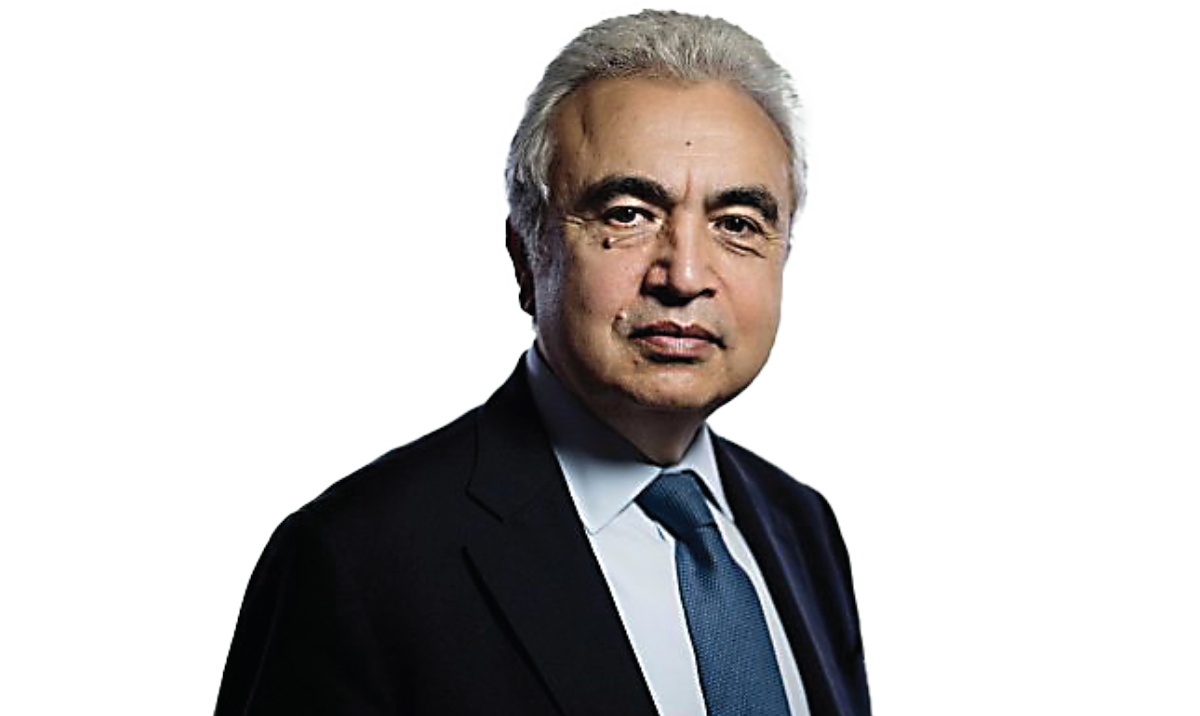RIYADH: Nuclear energy development funding needs to double to $120 billion a year by 2030 to meet the rising demand for infrastructure development, according to an analysis.
In its latest report, the International Energy Agency said that both public and private investments are needed to meet the rising financial needs in the sector.
According to the analysis, ensuring the predictability of future cash flows is key to bringing down financing costs and attracting private capital to the nuclear sector.
The analysis from IEA comes at a time when countries such as Saudi Arabia are actively exploring ways to ramp up nuclear programs to diversify their energy mix.
“Public funding alone will not be sufficient to build a new era for the nuclear energy sector. Private financing will be needed to scale up investments,” said IEA.
It added: “The private sector is increasingly viewing nuclear energy as an investible energy source with the promise of firm, competitive, clean power that can serve energy-intensive operations 24/7.”
IEA suggested that a supportive regulatory framework that increases visibility, including limiting liabilities, is crucial for debt financing in the nuclear energy sector, as financial institutions lend based on reliable future cash flow expectations.
“Long-term power purchase agreements can also be underwritten by large consumers, who can lock in future supplies of electricity at average cost. These arrangements can also open the door to proven commercial financing instruments, such as green bonds, supported by accommodating regulations and taxonomies,” said IEA.

It’s clear today that the strong comeback for nuclear energy that the IEA predicted several years ago is well underway, with nuclear set to generate a record level of electricity in 2025.
Fatih Birol, executive director of IEA
In a separate analysis published on Jan. 15, the Atlantic Council, an American think tank in the field of international affairs, echoed similar views and said the COP28 goal of tripling nuclear energy capacity is within reach, if investments are deployed in the sector in an adequate manner.
Amy Drake, assistant director at the Nuclear Energy Policy Initiative with the Atlantic Council Global Energy Center said that tripling nuclear energy capacity would require upwards of $150 billion in annual global investment by 2050.
“Private investment — in addition to government-backed initiatives — is critical to accelerate nuclear energy deployment at scale. Leaders in the nuclear energy industry must continue to engage with banks and financial institutions to mobilize capital to support anticipated levels of growth,” said Drake.
She added: “Deploying new nuclear energy projects at scale will require global leaders to translate pledges into action. Multilateral engagement, backing from the financial sector, and buy-in from new customers could deliver major wins for nuclear energy.”
IEA forecasts record nuclear energy generation in 2025
According to the report, electricity generated using nuclear power is expected to reach unprecedented levels this year, accounting for nearly 10 percent of global production — with a further 63 nuclear reactors currently under construction.
“It’s clear today that the strong comeback for nuclear energy that the IEA predicted several years ago is well underway, with nuclear set to generate a record level of electricity in 2025,” said Fatih Birol, executive director of IEA.
He added: “In addition to this, more than 70 gigawatts of new nuclear capacity is under construction globally, one of the highest levels in the last 30 years, and more than 40 countries around the world have plans to expand nuclear’s role in their energy systems.”
Ushering a new era in nuclear energy sector
The energy think tank said that renewed momentum behind nuclear energy has the potential to open a new era for the secure and clean power source as demand for electricity grows strongly around the world.
The agency added that the nuclear energy sector is showing a fresh impetus of growth driven by new policies, projects, investments and technological advances, such as small modular reactors.
“SMRs in particular offer exciting growth potential. However, governments and industry must still overcome some significant hurdles on the path to a new era for nuclear energy, starting with delivering new projects on time and on budget — but also in terms of financing and supply chains,” added Birol.
IEA highlighted that SMRs can dramatically cut the overall investment costs of individual projects to levels similar to those of large renewable energy projects such as offshore wind and large hydro, which makes these projects less risky for commercial lenders.

Deploying new nuclear energy projects at scale will require global leaders to translate pledges into action.
Amy Drake, assistant director at the Nuclear Energy Policy Initiative
Another major positive factor that could drive the growth of SMRs is their modular design which will significantly cut construction times, with projects expected to reach cash flow break-even up to 10 years earlier than for large reactors.
“The strong credit rating of the technology players behind data centers can also facilitate financing for SMR projects targeting this sector,” added the energy agency.
Last year, some of the world’s largest tech firms announced big commitments to invest in nuclear energy projects, including agreements between Google and Kairos Power, Amazon and X-energy, and Microsoft and Constellation Energy.
Atlantic Council said that partnerships between so-called Big Tech and reactor companies marked some of the most promising developments toward establishing demand at scale.
“The partnerships illustrate the potential for financial mechanisms, such as power purchase agreements, to de-risk investments in novel projects. Using these developments as a blueprint, nuclear energy providers should work closely with other energy-intensive sectors, such as heavy manufacturing, as demand for clean electricity surges worldwide,” said Drake.
IEA also highlighted the importance of the government’s role in strengthening the nuclear energy sector, which includes providing incentives and public finance. The report added that this power source can provide services and scale that are difficult to replicate with other low-emissions technologies.

“Taking advantage of this opportunity requires a broad approach from governments, encompassing robust and diverse supply chains, a skilled workforce, support for innovation, de-risking mechanisms for investment as well as direct financial support, and effective and transparent nuclear safety regulations, alongside provisions for decommissioning and waste management,” the IEA report added.
The analysis also highlighted the demographic and geographic distribution of nuclear power plants globally, with most of the existing nuclear power fleet today being in advanced economies, but many of those plants were built decades ago.
IEA added that the global map for nuclear energy is changing, with the majority of projects under construction in China, which is on course to overtake both the US and Europe in installed nuclear capacity by 2030.
Of the 52 reactors that have started construction worldwide since 2017, 25 are of Chinese design and another 23 are of Russian design.
“Today, more than 99 percent of the enrichment capacity takes place in four supplier countries, with Russia accounting for 40 percent of global capacity, the single largest share,” said Birol.
He added: “Highly concentrated markets for nuclear technologies, as well as for uranium production and enrichment, represent a risk factor for the future and underscore the need for greater diversity in supply chains.”
Saudi Arabia is also looking to play its part in the development of the energy source.
Launched in 2017, the Kingdom’s National Atomic Energy Project is a cornerstone of the government’s strategy to diversify its energy sources and reduce its dependence on fossil fuels.
The project aims to integrate nuclear power into the national energy mix, enhancing sustainability and fulfilling international commitments.
Earlier in January, Saudi Arabia’s Energy Minister Prince Abdulaziz bin Salman said that the Kingdom is planning to begin enriching and selling uranium.


























